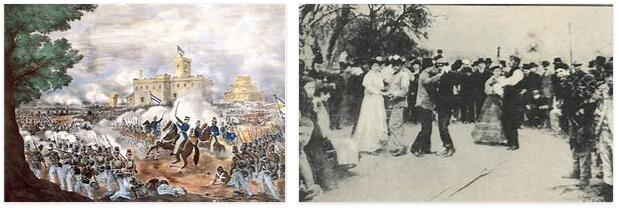What do the Argentines eat? Many dishes of Argentine cuisine can also be found in other Latin American countries, such as empanadas. These filled dumplings are sold all over the street. You can find a recipe for empanadas in the participation tip ! Meat is always an important part of the meal. The beef is […]
Category: Argentina
See localbusinessexplorer for Argentina democracy and rights.
Argentina Early History
The first residents Between 15,000 and 10,000 BC BC people first settled in what is now Argentina. They came from the north. Some indigenous peoples were still living as hunters and gatherers when the first Europeans entered the country in the 16th century. In the pampas and in northern Patagonia, for example, the Het and […]
Argentina History and Politics
Democratization (1912-1930) and the Notorious Decade Many presidents in the 19th and early 20th centuries ruled dictatorially and supported the rich landowners. Indians and immigrants did not even have the right to vote. It was not until 1912 that Roque Sáenz Peña introduced universal suffrage, after political opponents had strongly urged it. From 1916 to […]
Argentina Wildlife and Economy
Animals and Plants Animals and plants in Argentina In the rainforests in the north, the nature of Argentina looks very different than in the barren Patagonia, where even penguins live in the south. The country’s long coastline attracts more marine animals and water birds. So what animals and plants are there in Argentina? What animals […]
Argentina Overview
Argentina is located in southern South America by the Atlantic and is the second largest state in the world in terms of surface area. The country borders Bolivia, Brazil, Chile, Paraguay and Uruguay. Capital: Buenos Aires Biggest city: Buenos Aires State: Federal Republic Language: Spanish Religion: catholicism Surface: 2 766 890 km² Population: 41.3 million […]
Argentina Arts and Literature
Literature During the Spanish conquest and colonial times, the new rulers were accompanied by chroniclers who described the country, the people and political events, for example. Luis de Miranda (“Romance”, 1541–45) and Pero Hernández (“Comentarios”, 1554). The liberation from Spain in the early 19th century brought about a national literary flourishing. The authors were influenced […]






